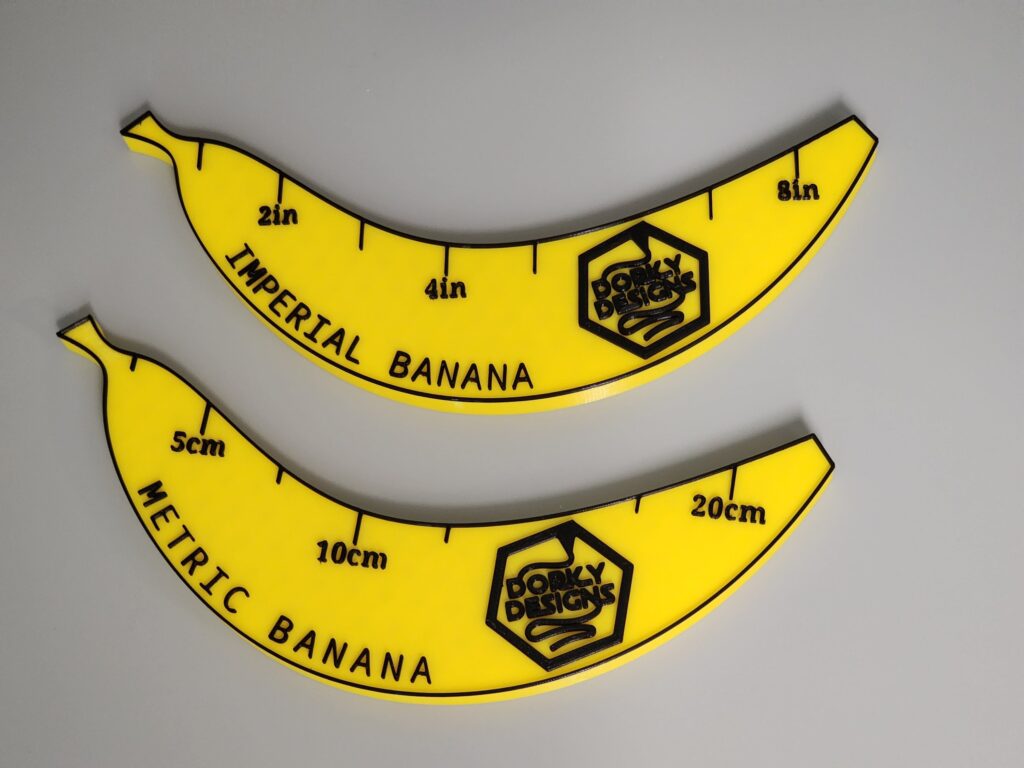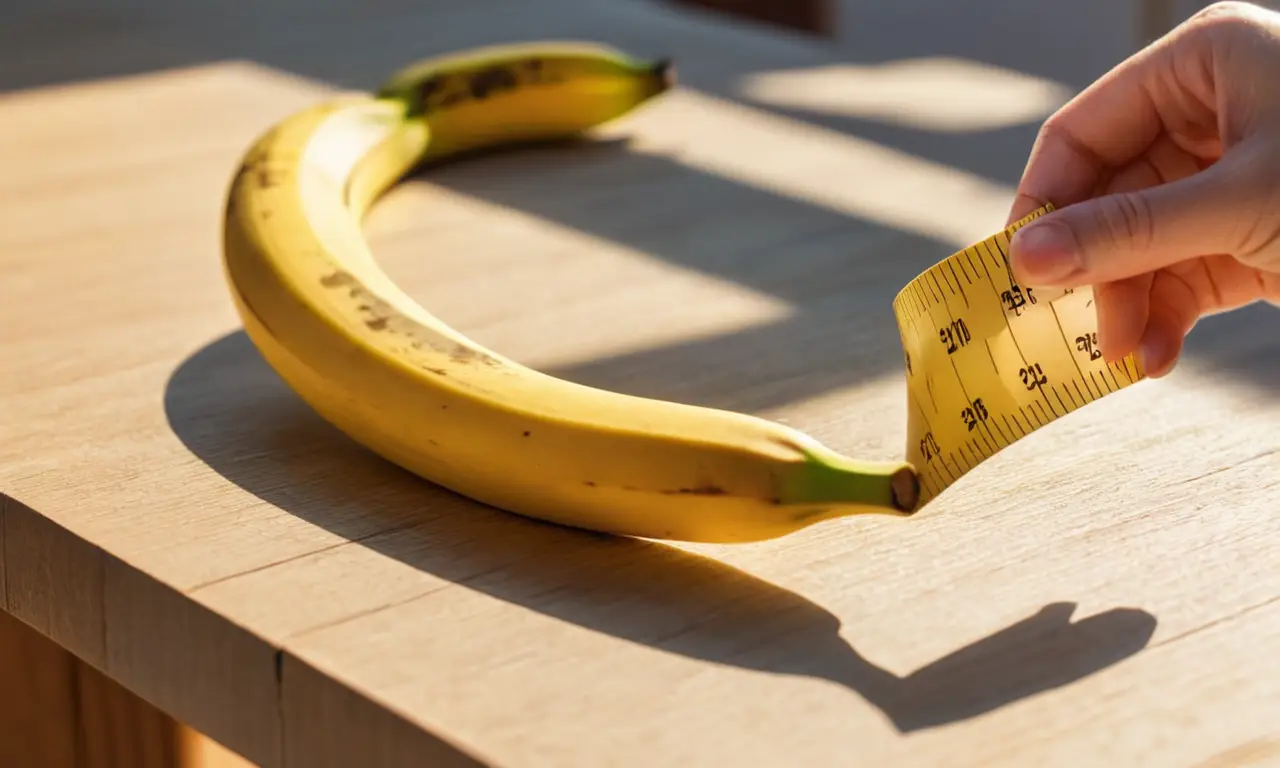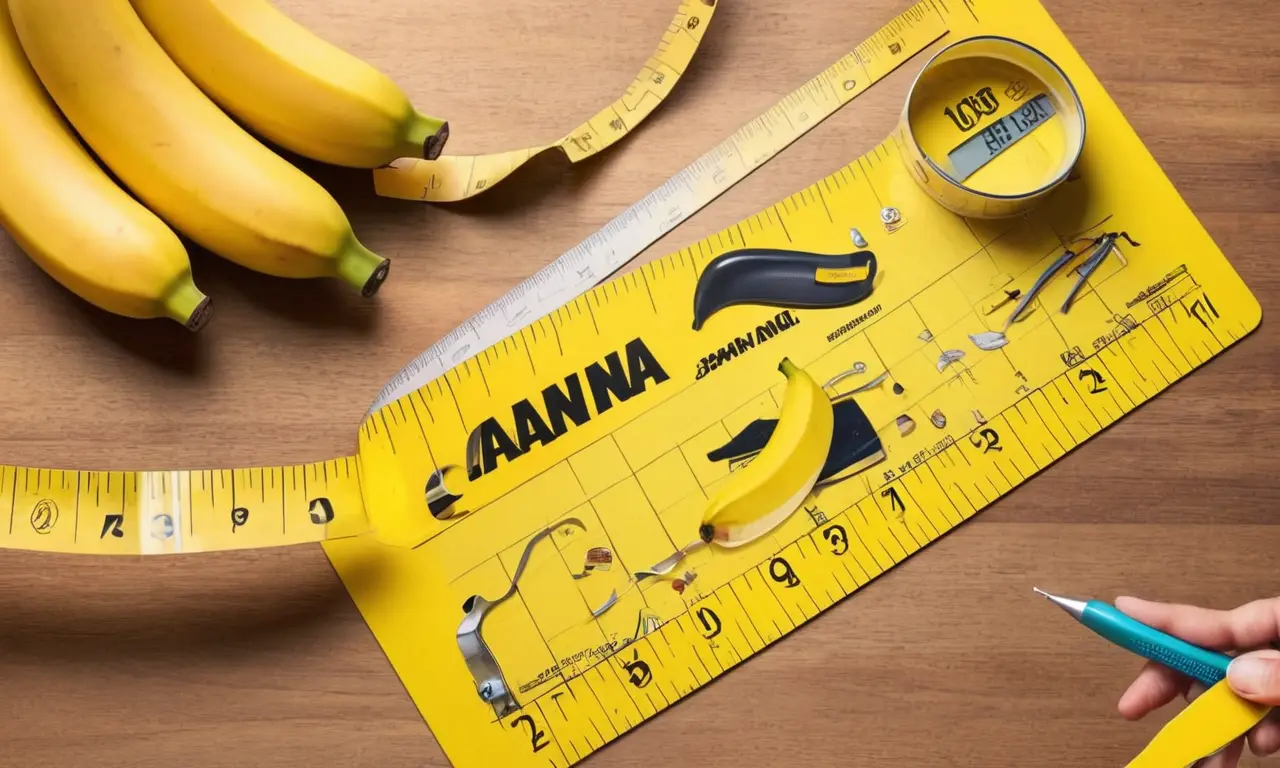
Bananas are a popular and versatile fruit enjoyed worldwide. Whether you’re following a recipe that calls for specific banana dimensions or simply curious about the size of your favorite fruit, knowing how to accurately measure a banana can be helpful. This article will guide you through the process of measuring both the length and circumference of a banana, ensuring consistent and reliable results every time.
This comprehensive guide will explore the techniques for measuring banana length and circumference, introduce essential tools for accurate measurement, and provide valuable tips for achieving consistent results. We’ll also delve into the variations in banana size and discuss factors that can influence their dimensions.
Measuring Banana Length
Determining the length of a banana is a straightforward process. Simply place the banana on a flat surface and use a ruler or measuring tape to measure from the tip of one end to the opposite end, ensuring the banana is straight for accurate readings.
For optimal accuracy, ensure the ruler or measuring tape is placed directly against the banana’s skin, avoiding any gaps or curves. If using a flexible measuring tape, gently press it against the banana’s surface to minimize slippage and ensure a precise measurement.
Remember to record the length in centimeters or inches, depending on your preference and the requirements of your recipe or comparison.
Measuring Banana Circumference

Measuring the circumference of a banana involves determining the distance around its widest point. Place the banana horizontally on a flat surface and use a flexible measuring tape to wrap it snugly around the middle section, where the banana is typically widest.
Ensure the measuring tape is taut but not overly tight, as excessive pressure can distort the banana’s shape and affect the measurement. Read the measurement at the point where the tape overlaps, ensuring it aligns with the starting point for accurate readings.
Record the circumference in centimeters or inches, depending on your needs.
Tools for Accurate Measurement
Several tools can be used to accurately measure bananas, each offering its own advantages:
Ruler
A ruler is a simple and readily available tool for measuring banana length. Choose a ruler with clear markings in centimeters or inches for precise readings.
Measuring Tape
A flexible measuring tape is ideal for measuring both banana length and circumference. Its flexibility allows it to conform to the banana’s shape, ensuring accurate measurements even around curves.
Digital Caliper
For highly precise measurements, consider using a digital caliper. This tool provides accurate readings in millimeters or inches, making it suitable for scientific applications or when precise dimensions are crucial.
Tips for Consistent Results

To achieve consistent and reliable banana measurements, follow these tips:
- Use a flat surface: Ensure the banana is placed on a level and stable surface to prevent inaccurate readings due to tilting or unevenness.
- Measure at room temperature: Bananas tend to be more pliable at room temperature, allowing for easier and more accurate measurement. Avoid measuring chilled bananas as they may be firmer and harder to measure accurately.
- Take multiple measurements: For increased accuracy, take several measurements of both length and circumference and average the results. This helps to minimize the impact of any minor variations in banana shape or size.
Banana Size Variations
Banana size can vary significantly depending on factors such as variety, growing conditions, and ripeness. Some common banana varieties include Cavendish, Lady Finger, and Red Dacca, each with distinct size characteristics.
Generally, bananas tend to be longer and thinner when unripe and shorter and wider as they ripen.
Conclusion
Measuring a banana accurately is essential for various applications, from following recipes to comparing fruit sizes. By utilizing the techniques outlined in this guide, you can confidently measure both the length and circumference of a banana using readily available tools like rulers or measuring tapes. Remember to follow the tips for consistent results and be aware that banana size can vary depending on factors such as variety and ripeness. With these insights, you’ll be well-equipped to accurately measure bananas for any purpose.
